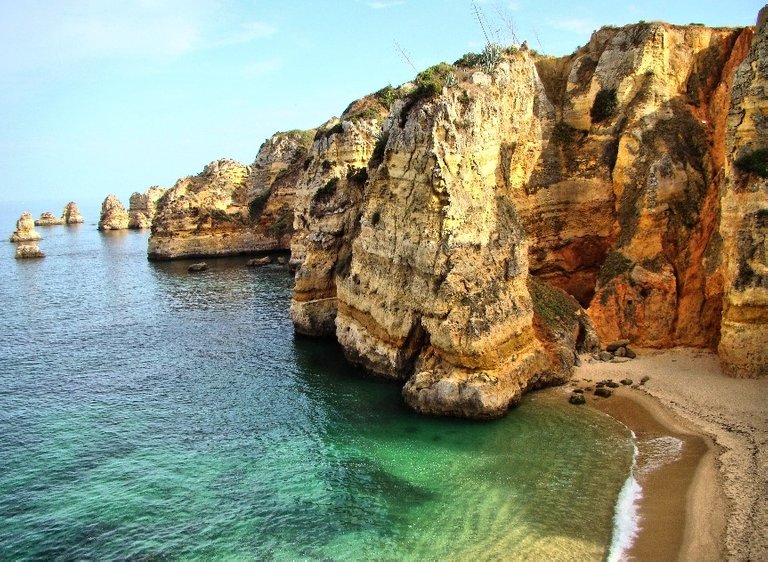Yesterday we have completed total study of igneous rocks and thier classification so today we will discuss about the sedimentary rock and it's characteristics.
b) Sedimentary Rock

Sedimentary Rocks are those rocks which are formed by gradual deposition or sedimentation under water,of weathering product of the pre-existing rocks on the surface of earth. The Igneous rocks,formed on the surface of the earth by the cooling of magma,is subjected to natural weathering agents like rain,air,frost,river flow,glacier,sea, temperature variations etc.These weathering agents break or disintegrate the surface rock. The products of weathered rock are then transported by other agents(wind etc.)from it's place of origin and deposited elsewhere. This process of deposition is called the sedimentary process and the rocks so formed are known as sedimentary rocks. These rocks can be easily split along the bedding plane.
Example:sand stone,lime stone,gypsum,shale,slate etc.
Formation of sedimentary rocks
.jpeg)
Examples of sedimentary rocks
Sand stone
.jpeg)
Lime stone
.jpeg)
Gypsum
.jpeg)
Shale
.jpeg)
Slate
.jpeg)
Charecterestic Of Sedimentary Rocks
a) Sedimentary Rocks are often well stratified and show well defined bedding planes.
b) sedimentary rocks can be split and cleared easily both in the bedding direction and normal to the bedding planes giving building blocks of fairly regularly shape.
c)properties of sedimentary rocks vary considerable depending upon the the nature of sediment and the type of bonding that exists between the adjacent sediment grains.
Based on the type of deposit, sedimentary rocks can be divided into the the following groups.
1)Residual deposits
- Sedimentary deposits
3)Chemical deposits
4)Organic deposits
1)Residual Deposits: These deposits are those products of weathering which are left in place of origin itself,and are not transported by the weathering agents.
- Sedimentary deposits: These are insoluble weathering products which are carried by suspension, and Deposited elsewhere by sedimentation. Majority of sedimentary rocks fall under this group.
3)Chemical deposits: These are those soluble weathering products which are carried away in solution by the weathering agent like water. The dissolved weathering products are later deposited by processes like evaporation and precipitation etc., giving rise to the formation of sedimentary rocks.
4)organic deposits : These are those weathering products which are deposited by organic organisms through biological processes.
Sedimentary Rocks can also be grouped under the following three heads on the basis of deposition of original particles:
Deposits by mechanical method: These are those deposits which are formed by transportation of weathering particles from one place to other by water.
Example:Sand stone,loam clay slate,clay rocks etc.Deposited by chemical method: These are those deposits which are formed by dissolved particles of weathered rocks which precipitate later due to lowering of temperature and consequent deposition of these precipitated particles when the following water slows down.
Example:lime stones, gypsum,calcareous rocks etc.Deposits by organic method: These are those rocks which are formed by the action of animals, organic organisms and plants out of their detrital remains.
Example: peat,lignite and volatile lime stone etc.
Peat
.jpeg)
Lignite
.jpeg)
Today we have completed Totally sedimentary rocks it's characteristics and examples of it.
In next topic we will discuss about the Metamorphic rocks. Till then good bye see you soon again.
